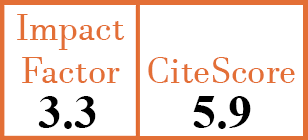Full Papers
Recurrence of thrombosis in patients with primary antiphospholipid syndrome: emphasis on arterial events
A.R. Cabral1, A. Turrent-Carriles2, I. Contreras-Yáñez3, A. Garcia-Torralba4, G. Hernandez-Molina5
- Division of Rheumatology, Department of Medicine, The Ottawa Hospital, University of Ottawa, Canada.
- ABC Hospital, Mexico City, México.
- Department of Immunology and Rheumatology, Instituto Nacional de Ciencias Médicas y Nutrición Salvador Zubirán, Mexico City, México.
- Department of Immunology and Rheumatology, Instituto Nacional de Ciencias Médicas y Nutrición Salvador Zubirán, Mexico City, México.
- Department of Immunology and Rheumatology, Instituto Nacional de Ciencias Médicas y Nutrición Salvador Zubirán, Mexico City, México. gabyhm@yahoo.com
CER18889
Full Papers
PMID: 40693427 [PubMed]
Received: 03/05/2025
Accepted : 14/07/2025
In Press: 21/07/2025
Abstract
OBJECTIVES:
To assess risk factors for rethrombosis, the intensity and maintenance of anticoagulation in primary antiphospholipid syndrome (APS).
METHODS:
We retrospectively included 81 patients with thrombotic APS under VKAs with ≥4 INR determinations per year in at least 1 year. We defined an index period as the time between the first available INR value and the next thrombotic event, or the time between the first and last available INR if rethrombosis-free. We recorded demographic and clinical/serologic variables, mean INR, mean INR-AUC, and anticoagulation intensity (INR<2.5, INR 2.5–3.5, and INR>3.5). For the statistical analysis we used Cox survival analysis, hazard function (H(t)) curves and AUC.
RESULTS:
The median follow-up time was 6.4 years. 64 patients had no rethrombosis, whereas 17 did (15 arterial, 2 venous). The risk factors for rethrombosis were number of previous rethrombosis (RR 7.3 95% CI 2.3-322.7, p=0.007) and INR intensity (RR 0.03, 95% CI 0.002-0.367, p=0.001). Results were similar when only arterial events were analysed. At the H(t) curves, the cumulative risk was higher in patients with an INR <2.5 than those in an INR of 2.5-3.5. A mean INR of 2.2 identified patients at risk of rethrombosis (SE=0.82, SP=0.20, AUC=0.42).
CONCLUSIONS:
The number of previous thrombotic events and the intensity of anticoagulation are rethrombosis risk factors. An INR ranging 2.5–3.5 protects against re-thrombosis, including arterial events.


